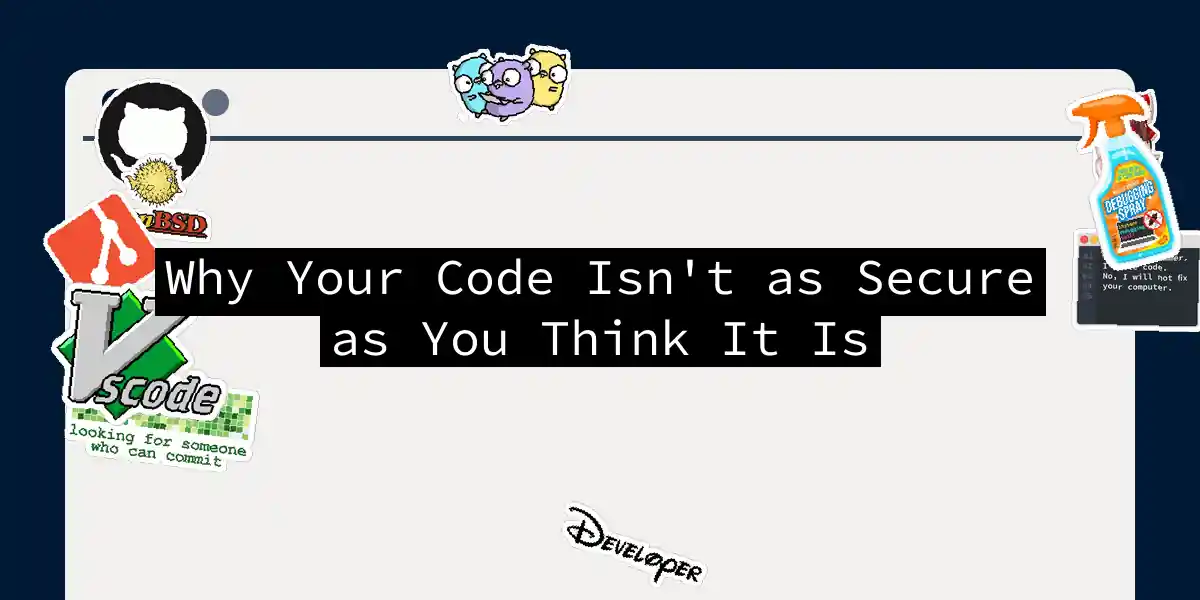The Illusion of Secure Code
In the world of software development, security is often treated like a mythical creature – everyone talks about it, but few actually see it in the wild. Even with the best intentions and a team of skilled developers, writing secure code can be a daunting task, especially when working with memory-unsafe languages like C and C++.
The Complexity of Memory-Unsafe Languages
Languages like C and C++ are notorious for their lack of memory safety features. These languages give developers a lot of freedom, but this freedom comes at a steep price. Here’s why:
Buffer Overflows and Null Pointers: In C and C++, it’s easy to write code that overflows buffers or dereferences null pointers. These errors can lead to vulnerabilities that allow attackers to execute arbitrary code, a nightmare for any security team.
Probabilistic Code Scanning: Automated code scanning tools can help identify some issues, but they often take a probabilistic approach. This means they might miss critical vulnerabilities because evaluating every possible state of variables, including those on the stack, is computationally infeasible. Recent advances in formal methods have improved this, but they require code to be written in a very specific, non-idiomatic style that most C programmers are not familiar with.
Human Error: Even with strict coding guidelines and extensive testing, human error can still creep in. The complexity of modern software systems, akin to managing a small city, makes it nearly impossible for any individual to master all components. This complexity leads to mistakes, such as overfilling buffers or freeing memory twice, which can compromise the entire system.
The Role of Automated Tools and Fuzzers
While automated tools and fuzzers are invaluable in identifying vulnerabilities, they are not a silver bullet. Here’s why:
Limitations of Automated Tools: Tools like Valgrind and Mudflap are useful but cannot guarantee the absence of errors. They can help identify issues, but they cannot cover all possible input scenarios. This means some bugs will inevitably slip through the testing phase.
Fuzzers and Personnel: Employing fuzzers and having personnel dedicated to finding vulnerabilities can enhance security, but it is expensive and time-consuming. Even with these measures, it’s challenging to ensure that all vulnerabilities are caught.
The Promise of Memory-Safe Languages
Languages like Rust have been developed to address the security issues inherent in C and C++. Here’s how they help:
Ownership and Borrowing: Rust introduces mechanisms like ownership and borrowing to prevent memory leaks and other common issues. For example, Rust forces developers to strictly define the ownership of variables, making it harder to write code that modifies variables in unintended ways.
Default Immutability: In Rust, variables are constant by default, and developers must explicitly declare them as mutable. This design choice reduces the likelihood of unintended changes to data.
Practical Steps to Enhance Security
While no code is completely secure, there are steps you can take to significantly improve the security of your applications:
Sanitize and Validate Input
One of the core principles of secure coding is to never trust your data. Always sanitize and validate input before processing it. This includes filtering and truncating input to prevent buffer overflows and SQL injection attacks.
Use Defense in Depth
Implementing multiple layers of security (defense in depth) can help mitigate the impact of a single vulnerability. This includes using secure protocols, encrypting data, and implementing access controls.
Regular Code Reviews and Testing
Regular code reviews and thorough testing are crucial. Use tools like OWASP’s Top Ten and SANS/CWE to guide your security practices. Additionally, model your system with threat modeling tools to identify and mitigate potential threats.
Avoid Security by Obscurity
Security by obscurity is not a viable strategy. Keeping source code secret does not make it secure; it merely delays the discovery of vulnerabilities. Instead, focus on writing secure code from the outset and use open-source security tools and best practices.
Conclusion
Writing secure code is a challenging task, especially in memory-unsafe languages. However, by understanding the pitfalls of these languages, leveraging automated tools, adopting memory-safe languages, and following best practices in secure coding, you can significantly enhance the security of your applications.
Remember, security is not a destination; it’s a continuous journey. Stay vigilant, keep learning, and always assume that your code is not as secure as you think it is.
In the end, it’s not about writing perfect code; it’s about writing code that is resilient and secure enough to withstand the ever-evolving landscape of cyber threats. So, the next time you write code, remember: security is everyone’s responsibility, and it starts with you.
